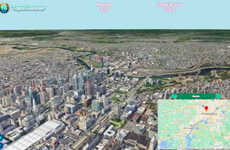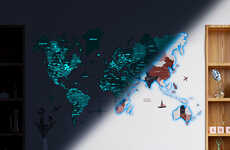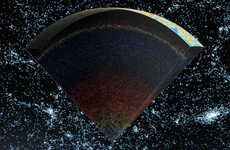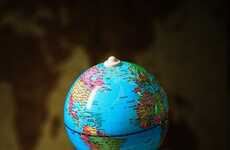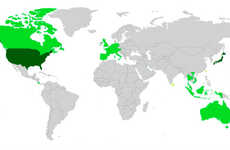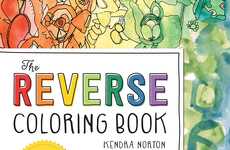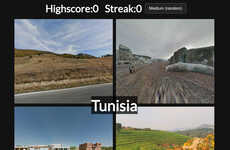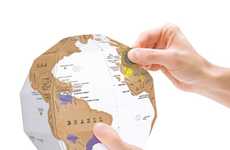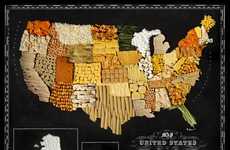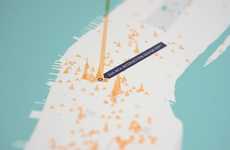
The Upside Down World Map Changes Global Directions
Gil Cohen — December 4, 2012 — Art & Design
References: thefancy
Part of the Terra Nova series, the Upside Down World Map flips the world on its head.
The map doesn't simply just write everything in reverse or upside down. In fact, only the image of the classic world map, found in many classrooms around the globe, has been flipped but the words remain right side up. That means that all of a sudden, the South Pole has become the North Pole and America is on top of Canada. Countries like Brazil and Australia are in the northern hemisphere, while Russia is in the southern hemisphere and North America is now South America. Confused yet?
The Upside Down World Map presents us with a new way to see the world.
The map doesn't simply just write everything in reverse or upside down. In fact, only the image of the classic world map, found in many classrooms around the globe, has been flipped but the words remain right side up. That means that all of a sudden, the South Pole has become the North Pole and America is on top of Canada. Countries like Brazil and Australia are in the northern hemisphere, while Russia is in the southern hemisphere and North America is now South America. Confused yet?
The Upside Down World Map presents us with a new way to see the world.
Trend Themes
1. Alternative Map Designs - Creating maps that challenge traditional perspectives and present alternative ways of viewing the world can provide a unique and disruptive innovation opportunity for companies in the cartography and travel industries.
2. Visual Disruption - The use of unconventional graphics and designs that challenge and disrupt common visual patterns can lead to innovative opportunities for graphic design, advertising, and branding industries.
3. Contrarian Marketing - Flipping traditional messaging or positioning can create a powerful disruption in consumer attitudes and provide a unique opportunity for companies in advertising and marketing.
Industry Implications
1. Cartography - The creation of alternative map designs challenges the traditional perception of maps and provides the cartography industry with an opportunity to innovate and provide new perspectives for consumers.
2. Travel - The creation of unconventional maps can drive interest in unique travel destinations and provide travel companies with an opportunity to position their offerings in a new way.
3. Graphic Design - Challenging visual patterns and disrupting conventions can help graphic design companies to stand out and appeal to brands who want to convey a sense of innovation and disruption in their communication strategies.
1.9
Score
Popularity
Activity
Freshness

